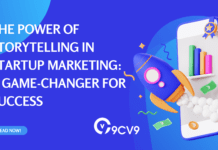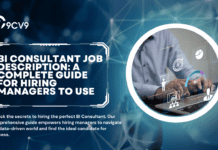Key Takeaways
- Contest software simplifies the creation and management of online contests to boost engagement, generate leads, and increase brand visibility.
- It offers powerful features like automation, analytics, fraud prevention, and CRM integration for seamless campaign execution.
- Businesses across industries use it to drive conversions, collect user-generated content, and foster long-term customer loyalty.
In today’s fast-paced digital landscape, capturing and retaining audience attention has become increasingly challenging for brands, marketers, and content creators alike. As businesses continue to explore innovative ways to boost engagement, increase brand visibility, and generate qualified leads, online contests have emerged as one of the most effective and interactive marketing strategies. But behind every seamless giveaway, referral contest, or social media sweepstake lies a powerful tool that automates and manages the entire process—contest software.

Contest software, also referred to as online contest platforms or giveaway management tools, enables individuals and organizations to effortlessly create, launch, and monitor a wide range of digital contests across multiple platforms. From simple lucky draws and photo contests to complex referral campaigns and multi-step challenges, this software acts as a comprehensive solution for designing engaging experiences while collecting valuable user data in a secure and compliant manner. Whether you’re a small e-commerce business aiming to boost your email subscriber list or a global brand looking to go viral on social media, contest software offers the scalability, automation, and customization you need to achieve impactful results.
What sets contest software apart from manual contest management is its ability to streamline every stage of the contest lifecycle—from setting entry rules and selecting prizes to tracking participant activity, preventing fraud, and generating real-time analytics. With built-in templates, social media integrations, and customizable workflows, these platforms empower users to launch campaigns in minutes without requiring advanced technical skills. Additionally, many contest software tools come equipped with advanced features such as multi-language support, drag-and-drop builders, CRM integrations, and AI-powered winner selection, making them versatile for businesses of all sizes.
As the digital marketplace becomes more competitive, the demand for interactive content and personalized experiences continues to rise. Online contests—when executed strategically—can generate massive engagement, drive traffic, increase user-generated content, and encourage social sharing, all of which contribute to improved brand awareness and long-term customer loyalty. Contest software plays a pivotal role in turning these goals into reality by automating repetitive tasks, enhancing user experience, and ensuring consistent brand messaging across all touchpoints.
In this comprehensive guide, we will explore what contest software is, how it works, the core features it offers, and the tangible benefits it brings to modern marketing efforts. We will also delve into real-world use cases, provide tips for running successful campaigns, and highlight the most popular contest software tools currently available in the market. Whether you’re new to online contests or looking to optimize your next campaign, this article will provide you with the knowledge and insights needed to make the most of this powerful digital marketing tool.
Before we venture further into this article, we would like to share who we are and what we do.
About 9cv9
9cv9 is a business tech startup based in Singapore and Asia, with a strong presence all over the world.
With over nine years of startup and business experience, and being highly involved in connecting with thousands of companies and startups, the 9cv9 team has listed some important learning points in this overview of What is Contest Software and How It Works.
If your company needs recruitment and headhunting services to hire top-quality employees, you can use 9cv9 headhunting and recruitment services to hire top talents and candidates. Find out more here, or send over an email to [email protected].
Or just post 1 free job posting here at 9cv9 Hiring Portal in under 10 minutes.
What is Contest Software and How It Works
- What is Contest Software?
- Key Features of Contest Software
- How Contest Software Works
- Benefits of Using Contest Software
- Popular Use Cases and Real-World Examples
- Tips for Running a Successful Online Contest
- Common Challenges and How to Overcome Them
1. What is Contest Software?
Contest software is a digital solution that enables individuals, brands, and marketing teams to create, manage, and optimize online contests, giveaways, sweepstakes, and other promotional campaigns across multiple platforms. It automates the process of contest creation, participant engagement, data collection, winner selection, and performance analytics—allowing users to run interactive campaigns efficiently without manual effort or technical complexity.
Definition and Purpose of Contest Software
- Contest software refers to cloud-based or self-hosted platforms specifically designed for managing digital competitions.
- It is commonly used to boost brand visibility, increase audience engagement, grow email lists, and drive conversions through incentivized participation.
- These tools often come with drag-and-drop interfaces, customizable templates, and real-time analytics dashboards.
- Contest software is suitable for businesses of all sizes, from startups to global enterprises.
Core Objectives of Using Contest Software
- Automate Campaign Management: Streamlines the setup, promotion, and monitoring of contests.
- Increase User Engagement: Offers interactive formats that encourage users to participate and share.
- Capture Lead Data: Collects emails, demographics, preferences, and behavioral insights.
- Ensure Compliance: Supports GDPR, CAN-SPAM, and regional contest regulations.
- Enhance Brand Reach: Promotes viral sharing through social media integration.
Common Features of Contest Software Platforms
| Feature | Functionality |
|---|---|
| Customizable Templates | Pre-built contest designs for quizzes, giveaways, and sweepstakes |
| Entry Method Options | Email, social media follow/share, referral, commenting, uploading content |
| Anti-Fraud Tools | IP filtering, CAPTCHA, user verification to prevent duplicate or fake entries |
| Real-Time Analytics | Track signups, traffic sources, shares, conversions, and engagement metrics |
| CRM & Email Integration | Connect with platforms like Mailchimp, HubSpot, or ActiveCampaign |
| Winner Selection | Automated or manual winner picking, with random draw or points-based logic |
| Platform Compatibility | Integration with Facebook, Instagram, TikTok, Twitter, and websites |
| Mobile Optimization | Responsive design for contests to run seamlessly on smartphones and tablets |
Types of Contests Supported by Contest Software
- Giveaways & Sweepstakes
- Example: A beauty brand offers a skincare set to 5 lucky winners who follow them on Instagram and tag a friend.
- Photo and Video Contests
- Example: A travel company invites users to submit vacation photos for a chance to win free flights.
- Referral Contests
- Example: An app runs a “Refer & Win” contest where the participant with the most referrals wins a cash prize.
- Quiz or Trivia Competitions
- Example: A SaaS company offers a 50% discount to the first 10 users who score 100% on a product knowledge quiz.
- Hashtag Challenges
- Example: A clothing brand encourages users to post OOTD (outfit of the day) using a branded hashtag to win gift cards.
Examples of Popular Contest Software Tools
| Tool Name | Best For | Key Features | Free Plan |
|---|---|---|---|
| Gleam | Social media contests & giveaways | Multi-entry actions, fraud detection, CRM integration | Yes |
| Rafflecopter | Simple giveaways | Easy setup, widget embed, email integration | Yes |
| ViralSweep | Referral-based contests | Viral sharing, analytics, automation | No |
| Woobox | Custom contest types | Quizzes, coupons, polls, Instagram contests | Yes |
| SweepWidget | Multi-channel engagement | Over 90 entry methods, leaderboard, timer countdowns | Yes |
Who Uses Contest Software and Why?
- Small Businesses
- To increase email subscribers and promote new product launches.
- Digital Marketing Agencies
- To manage contest campaigns for clients and track ROI.
- E-commerce Brands
- To drive website traffic, boost sales, and reward loyal customers.
- Nonprofits & Educational Institutions
- To raise awareness, collect signups, or engage communities through themed challenges.
- Content Creators and Influencers
- To grow social media followers and reward active audience members.
Benefits of Contest Software in Marketing Campaigns
- Scalability: Capable of handling contests with thousands of participants without performance drops.
- Customization: Aligns with brand identity via flexible templates and white-label options.
- Automation: Reduces manual tasks such as entry tracking, winner selection, and result sharing.
- Data-Driven Decisions: Provides actionable insights to improve future campaigns.
Real-World Example
Case Study: A Fashion E-commerce Brand Using Gleam
- Objective: Grow email list and Instagram followers.
- Campaign: Hosted a “$500 Shopping Spree Giveaway”.
- Requirements: Users must follow the brand on Instagram, like a post, and subscribe via email.
- Results:
- Over 25,000 new email subscribers.
- Instagram followers increased by 60%.
- Engagement rate doubled within 2 weeks.
By providing a flexible, efficient, and data-rich way to manage promotional campaigns, contest software has become an essential tool for modern marketers. It bridges the gap between interactive engagement and measurable business outcomes—making it a must-have in digital growth strategies.
2. Key Features of Contest Software
Contest software platforms are equipped with a wide range of features that streamline every stage of managing a digital contest—from design and launch to entry collection and post-campaign analytics. These tools are built not only to automate the technical aspects of contest management but also to maximize user engagement, ensure legal compliance, and generate actionable data. Below is a comprehensive breakdown of the core features you can expect from modern contest software platforms.
Customizable Contest Builders
- Drag-and-Drop Interfaces
- Enables easy visual editing of contests without coding knowledge.
- Users can drag elements such as images, buttons, text, and entry forms into place.
- Pre-Designed Templates
- Offers ready-to-use formats for giveaways, photo contests, quizzes, and more.
- Saves time while ensuring professional design standards.
- White-Label Branding
- Allows complete customization of colors, logos, typography, and domain URLs.
- Helps align the contest page with the organization’s brand identity.
Example: Woobox offers a visual campaign builder with drag-and-drop support for creating responsive contest pages in minutes.
Multi-Platform Integration
- Social Media Connectivity
- Integrates with Facebook, Instagram, TikTok, Twitter (X), LinkedIn, and Pinterest.
- Enables entry via likes, shares, follows, comments, or hashtag participation.
- Website Embeds
- Allows contests to be embedded on brand websites or landing pages using widgets or iFrames.
- Third-Party App Integration
- Syncs with tools like Mailchimp, HubSpot, Zapier, Shopify, Salesforce, and more.
Integration Capabilities Table
| Platform | Integration Support | Purpose |
|---|---|---|
| Facebook & Instagram | Yes (via APIs) | User login, likes, comments, UGC uploads |
| Mailchimp | Yes | Email list syncing |
| Shopify | Yes | Connect promotions to product listings |
| Zapier | Yes | Automate workflows and triggers |
Multiple Entry Methods
- Email Submissions
- Collects participant emails via opt-in forms.
- Social Media Actions
- Entrants earn points or qualify by sharing, tagging, commenting, or following.
- Referral Links
- Participants are given unique URLs to share; each referral earns points or entries.
- Content Uploads
- Users can upload images, videos, or documents for creative contests.
Example: Gleam allows contests to award extra entries for actions like subscribing on YouTube, visiting a product page, or referring friends.
Gamification and User Engagement
- Points and Leaderboards
- Assigns points for different actions (e.g., 5 points for sharing, 10 for referrals).
- Displays top participants in real-time to encourage competition.
- Countdown Timers
- Adds urgency by showing time left to enter or win.
- Instant Win Mechanics
- Awards prizes instantly based on entry conditions or probability.
- Progress Bars
- Visual progress indicators encourage users to complete more actions.
Automation & Workflow Scheduling
- Start and End Date Controls
- Pre-schedule contests to automatically launch and close at specified times.
- Email Notifications
- Sends confirmation emails, reminder notifications, and winner alerts automatically.
- Automated Winner Selection
- Random or rule-based algorithms pick winners without manual oversight.
Workflow Example Chart
| Step | Automation Feature |
|---|---|
| Campaign Launch | Pre-scheduled timer |
| Entry Collection | Auto-sync with email tools |
| Mid-Campaign Reminder | Scheduled email blast |
| Winner Selection | Random draw with filtering options |
| Post-Campaign Follow-up | Auto-report generation |
Data Collection and CRM Integration
- Lead Generation Forms
- Custom fields for capturing emails, phone numbers, location, preferences, etc.
- Real-Time Data Syncing
- Immediate syncing with CRMs and marketing platforms for segmentation.
- Consent Management
- Checkboxes and privacy policy links to comply with GDPR and similar regulations.
Example: ViralSweep allows collected data to be exported or synced in real-time with CRMs like Salesforce or Keap for advanced lead nurturing.
Analytics and Performance Tracking
- Real-Time Dashboards
- Track user entries, traffic sources, demographics, and engagement stats.
- Conversion Tracking
- Measures how many users took valuable actions like email opt-ins or purchases.
- Social Performance Metrics
- Monitors likes, shares, comments, and hashtag usage.
Sample Analytics Dashboard Layout
| Metric | Description |
|---|---|
| Total Entries | Number of unique participants |
| Referral Traffic | Visitors driven through participant shares |
| Conversion Rate | Entry completions per total page visits |
| Engagement Rate | Interactions per post (likes, comments) |
Security and Fraud Prevention
- IP and Email Filtering
- Limits duplicate entries or blocks specific domains/locations.
- CAPTCHA Verification
- Prevents bot entries and spam submissions.
- Activity Monitoring
- Detects suspicious behavior like multiple entries from a single IP address.
- Blacklist & Whitelist Options
- Ban certain users or allow entries only from approved regions or user types.
Example: SweepWidget includes a built-in cheating protection system that auto-disqualifies users based on behavior patterns.
Legal Compliance and Terms Management
- Region-Based Restrictions
- Limit contest visibility based on country or age demographics.
- Terms & Conditions Generator
- Auto-generate or upload customized contest rules and eligibility criteria.
- Privacy Policy Integration
- Embed links to data collection and privacy agreements for user transparency.
Mobile Optimization and Accessibility
- Responsive Design
- Ensures seamless experience across mobile, tablet, and desktop.
- Fast Load Speed
- Optimized for minimal load times to reduce bounce rates.
- Accessibility Features
- Alt-text, readable fonts, and contrast options to support ADA compliance.
Summary Table: Key Features Comparison Across Popular Tools
| Feature | Gleam | Woobox | SweepWidget | ViralSweep | Rafflecopter |
|---|---|---|---|---|---|
| Drag-and-Drop Builder | Yes | Yes | Yes | Limited | No |
| Social Media Integrations | Extensive | Moderate | Extensive | Extensive | Moderate |
| Email/CRM Sync | Yes | Yes | Yes | Yes | Yes |
| Entry Methods | Multiple | Multiple | 90+ | Multiple | Limited |
| Fraud Protection | Strong | Basic | Advanced | Strong | Moderate |
| Analytics Dashboard | Yes | Yes | Yes | Advanced | Basic |
The key features of contest software collectively empower businesses to execute highly interactive, secure, and results-driven marketing campaigns. From multi-entry contests and real-time engagement tracking to automation and compliance, these functionalities allow organizations to maximize reach, deepen audience interaction, and gain valuable insights without the complexity of manual processes.
3. How Contest Software Works
Contest software operates as an all-in-one digital platform that streamlines the entire lifecycle of running a contest—from ideation and design to user participation, automation, data collection, and performance analytics. These platforms are designed to simplify complex technical workflows, enabling marketers and business owners to execute engaging campaigns with minimal manual effort. Below is a detailed breakdown of how contest software works, divided into functional phases, technical processes, and real-world use case examples.
Step-by-Step Breakdown of How Contest Software Works
1. Campaign Setup and Configuration
- Select Contest Type
- Choose from predefined contest formats like giveaways, sweepstakes, photo contests, quizzes, or referral campaigns.
- Example: A business selects a “Viral Giveaway” format for launching a product.
- Customize the Contest Page
- Use drag-and-drop editors or pre-built templates to add images, branding, entry forms, and rules.
- Apply brand colors, logos, and custom domains (white-labeling).
- Define Entry Criteria
- Choose what actions users must take to participate: email sign-up, social media engagement, content upload, etc.
- Set Rules and Terms
- Specify eligibility criteria (age, region), entry limits, prize details, and contest duration.
- Upload or auto-generate terms & conditions and privacy policies.
2. Multi-Platform Integration and Launch
- Social Media and Web Integration
- Connect with Facebook, Instagram, TikTok, Twitter (X), YouTube, LinkedIn, and Pinterest.
- Embed the contest into a website, landing page, or blog post.
- Marketing Tool Integrations
- Sync with email marketing platforms (Mailchimp, ActiveCampaign), CRM tools (HubSpot, Salesforce), or automation tools (Zapier).
- Responsive Design for All Devices
- Ensure the contest page is mobile-friendly and loads quickly across all browsers.
Example: A skincare brand integrates their Instagram contest on their website homepage using SweepWidget, while simultaneously syncing all entries with their Mailchimp list.
3. Promotion and User Participation
- Distribute Across Channels
- Promote the contest via email, paid ads, influencer marketing, and organic social media posts.
- Encourage Viral Sharing
- Use referral links, leaderboard challenges, and bonus point systems to incentivize participants to share.
- User Engagement Features
- Countdown timers, instant win pop-ups, progress bars, and thank-you messages keep users motivated.
Participation Example:
| Action | Rewarded With |
|---|---|
| Submitting email | 1 entry point |
| Sharing on Facebook | 2 extra entry points |
| Referring a friend | 5 extra entry points |
| Uploading a photo | Required for entry |
4. Data Collection and Lead Management
- Real-Time Entry Capture
- Every participant’s data is securely collected and stored in the backend.
- Customizable Entry Forms
- Collect names, emails, locations, preferences, and survey answers.
- Consent and Compliance
- Include GDPR checkboxes and double opt-ins to ensure legal compliance.
- Lead Segmentation
- Automatically tag or segment participants by behavior, platform, or entry source.
Example: A travel agency uses ViralSweep to run a quiz-based contest, collecting participant preferences to personalize future vacation package offers.
5. Automation and Contest Workflow Management
- Start and End Scheduling
- Automatically launch and close the contest at specified times.
- Email Triggers
- Send automated confirmation emails, reminders, and promotional offers.
- Automated Winner Selection
- Use random draw or points-based algorithms to pick winners fairly and transparently.
Automated Workflow Example:
| Trigger | Action Executed Automatically |
|---|---|
| Contest Start Date Reached | Contest goes live on website and social media |
| New Entry Captured | Send confirmation email with bonus offer |
| Contest Ends | Entries close and backend locks data |
| Winner Draw Date Arrives | Winner selected and notified via email |
6. Performance Monitoring and Reporting
- Live Dashboard
- Monitor key metrics such as entries, shares, traffic sources, and conversion rates.
- Custom Reports
- Export CSV/PDF reports to analyze performance across demographics and platforms.
- A/B Testing Tools
- Run tests on different contest layouts or CTA texts to find the most effective version.
Example Analytics Dashboard Layout
| Metric | Value |
|---|---|
| Total Participants | 12,000 |
| Referral Conversions | 4,500 |
| Social Shares | 6,200 |
| Mobile vs Desktop Participants | 70% Mobile / 30% Desktop |
| Highest Performing Channel | Instagram Ads |
7. Post-Campaign Activities
- Winner Announcement
- Notify winners through email, display on contest page, or announce via social platforms.
- Reward Distribution
- Send gift cards, coupon codes, physical products, or exclusive digital downloads.
- Follow-Up Engagement
- Add participants to marketing funnels, newsletters, or loyalty programs.
- Retargeting Campaigns
- Use pixel data and email lists to retarget contest participants with future offers.
Example: After a photo contest run by a fitness brand using Woobox, the brand sends discount codes to all non-winners and launches a post-campaign email series for upselling.
Technical Workflow of Contest Software
Back-End Mechanics:
- Database Management
- Secure storage of participant data, activity logs, and behavioral tracking.
- API & Webhook Integrations
- Sync with third-party apps in real time for seamless marketing automation.
- Security Protocols
- SSL encryption, CAPTCHA systems, and fraud detection to ensure data integrity.
Front-End User Journey:
| Phase | User Interaction |
|---|---|
| Landing on Contest Page | Views contest details and rules |
| Participation | Completes entry actions and submits form |
| Confirmation | Receives confirmation screen or email |
| Sharing | Promoted to share contest with friends or on social media |
| Follow-up | Gets re-engaged with reminder or offer email |
Real-World Use Case: Tech Gadget Launch
- Brand: TechGearPro
- Goal: Collect 10,000 leads before product launch.
- Software Used: Gleam
- Campaign: “Win the Latest Smartwatch” – Participants enter via email, earn extra entries by sharing.
- Duration: 14 days
- Results:
- 18,500 unique entries
- 8,000 new email subscribers
- 3,400 referrals
- Conversion rate: 38%
By following a structured workflow and integrating seamlessly with the broader marketing stack, contest softwareensures that digital campaigns run smoothly, deliver measurable results, and enhance user experiences. From effortless setup to deep post-contest analytics, the software acts as the backbone of modern-day interactive marketing strategies.
4. Benefits of Using Contest Software
Using contest software provides a strategic advantage for brands, marketers, and organizations aiming to enhance customer engagement, drive conversions, grow audiences, and gain data-driven insights. It eliminates the need for manual contest administration and introduces a range of marketing, operational, and user experience benefits that make campaigns more impactful and efficient. Below is a detailed, SEO-optimised breakdown of the major benefits of using contest software.
1. Increases Audience Engagement Across Platforms
- Interactive Entry Methods
- Encourages users to actively participate through quizzes, uploads, shares, and polls.
- Drives more time spent on brand assets such as websites and social media.
- Gamification Elements
- Features like leaderboards, instant wins, and progress bars create excitement and ongoing interaction.
- Social Media Boost
- Contest software facilitates platform-specific actions like liking, commenting, or tagging friends.
- Enhances organic reach and content virality.
Example: A fashion retailer used Woobox to run a “Style Your Look” photo contest on Instagram, leading to over 4,000 user submissions and a 230% boost in profile engagement.
2. Grows Email Lists and Generates High-Quality Leads
- Lead Capture Forms
- Seamlessly collect names, email addresses, phone numbers, and demographics during the entry process.
- Lead Segmentation
- Automatically tag and segment leads based on behavior, interests, or entry method.
- Email Marketing Integration
- Syncs captured data with platforms like Mailchimp, HubSpot, or Klaviyo for follow-up campaigns.
Lead Generation Funnel Example
| Phase | Action |
|---|---|
| Contest Entry | User submits email and enters contest |
| Lead Enrichment | Additional data fields like interests added |
| CRM Sync | Data flows into marketing automation tools |
| Email Follow-up | Participant receives thank-you and offers |
Example: A SaaS company used ViralSweep to collect 12,000+ leads in 30 days by offering free annual subscriptions as part of a referral contest.
3. Enhances Brand Awareness and Online Visibility
- Branded Contest Pages
- Customizable themes and white-label features reinforce brand identity.
- Multi-Channel Reach
- Distribute contests across websites, emails, Facebook, Instagram, TikTok, and more.
- User-Generated Content (UGC)
- Promotes brand through real content like reviews, photos, and videos shared by users.
Visibility Impact Table
| Marketing Channel | Result from Contest Software |
|---|---|
| UGC submission drives hashtag exposure | |
| Website | Increased average session duration |
| Email Campaign | Higher open and click-through rates |
| Facebook Ads | Lower CPC due to viral sharing |
Example: A beverage company ran a “Best Summer Drink Moment” contest with SweepWidget and saw their branded hashtag reach 1.5 million impressions within two weeks.
4. Saves Time Through Automation and Scalability
- Automated Campaign Scheduling
- Set start and end times, winner selection, and email notifications without manual oversight.
- Workflow Triggers
- Automate follow-ups, confirmations, or rewards based on user behavior.
- Effortless Management
- Manage thousands of entries without spreadsheets or manual filtering.
Contest Automation Workflow Example
| Step | Automation Triggered |
|---|---|
| Contest Launch | Automatically goes live on selected channels |
| Entry Submission | Sends confirmation email to participant |
| End Date Reached | Closes contest and disables entry form |
| Winner Selection | Randomized draw with one-click announcement |
Example: An e-commerce store used Gleam to automate their monthly giveaway campaigns and reduced admin time by 80%, while maintaining consistent customer engagement.
5. Improves Data Collection and Actionable Insights
- Real-Time Analytics
- Monitor traffic sources, entry counts, social shares, and conversion rates.
- A/B Testing Capabilities
- Test headline variations, CTA buttons, or prize types to optimize performance.
- Behavioral Tracking
- Understand what actions users take, how they share, and what platforms work best.
Analytics Dashboard Sample View
| Metric | Insight Provided |
|---|---|
| Top Referrer | Facebook shares generated 38% of traffic |
| Device Usage | 72% of entries from mobile devices |
| Best Performing CTA | “Enter to Win Now” had highest conversion |
| Time of Day Engagement | Peak entries occurred at 6–9 PM |
Example: A B2B brand used Rafflecopter to analyze contest participation patterns and optimized future campaigns to target high-conversion time zones.
6. Boosts Conversion Rates and Sales
- Exclusive Discounts
- Offer coupon codes to all participants or non-winners to convert interest into purchases.
- Upselling Opportunities
- Use post-contest email flows to promote premium offers or add-ons.
- Exit-Intent Campaigns
- Trigger a contest pop-up when users are about to leave the site, reducing bounce rates.
Contest-Driven Sales Funnel
| Funnel Stage | Conversion Strategy |
|---|---|
| Entry | Collect user contact and intent data |
| Reward | Offer freebie or discount as a thank-you |
| Email Follow-up | Share testimonials, product bundles |
| Final Conversion | User purchases promoted item |
Example: An online pet store launched a “Win a Year’s Supply of Dog Food” contest using Woobox, leading to a 27% increase in sales during the campaign period.
7. Ensures Legal Compliance and Security
- Built-In GDPR, CCPA Compliance
- Includes consent checkboxes, data policies, and opt-in confirmations.
- Secure Data Storage
- SSL encryption, encrypted databases, and IP filters ensure privacy.
- Automated Rule Application
- Restrict entries by age, region, or duplicate attempts based on preset rules.
Compliance Checklist Sample
| Requirement | Feature Included in Contest Software |
|---|---|
| Consent Collection | Yes, via customizable checkboxes |
| Age Verification | Yes, with birthdate field or checkbox |
| Duplicate Prevention | Yes, through IP/email verification |
| Exportable Data Logs | Yes, for audit and reporting needs |
Example: A financial services firm used ViralSweep to run a compliant sweepstake campaign, including age-gating, consent tracking, and exportable reports for legal teams.
8. Drives Long-Term Customer Loyalty and Community Building
- Reward-Based Loyalty Programs
- Link contests with point systems and reward tiers for repeat participation.
- Community Engagement
- Build stronger relationships by showcasing user submissions and celebrating winners publicly.
- Survey and Feedback Integration
- Collect user opinions and ideas as part of the contest process.
Example: A nonprofit organization used SweepWidget to launch a storytelling contest and fostered a dedicated community of supporters who later became monthly donors.
Summary Chart: Benefits Comparison
| Benefit | Impact on Business | Software Feature Enabling It |
|---|---|---|
| Increased Engagement | More shares, entries, and time-on-site | Gamification, Social Integrations |
| Lead Generation | Higher email and contact capture | Custom Forms, CRM Sync |
| Brand Visibility | Enhanced awareness and online presence | Multi-Channel Distribution, UGC |
| Operational Efficiency | Less manual work and fewer errors | Automation, Scheduling Tools |
| Rich Analytics and Data Insights | Informed campaign decisions | Dashboards, Tracking, A/B Testing |
| Improved Conversions and Sales | Higher customer acquisition | Discount Codes, Upsell Flows |
| Legal and Security Compliance | Trust and risk mitigation | GDPR, CCPA Tools, Secure Hosting |
| Long-Term Customer Loyalty | Repeat engagement and trust | Email Flows, Community Highlights |
Contest software delivers far more than simple contest management—it acts as a complete marketing automation engine, enhancing every aspect of a campaign. Whether the goal is to generate leads, boost engagement, collect feedback, or increase sales, leveraging the capabilities of contest software allows businesses to meet objectives with greater efficiency, accuracy, and creativity.
5. Popular Use Cases and Real-World Examples
Contest software is a versatile digital solution used across a wide range of industries and marketing strategies. Its adaptability allows organizations—from small businesses to global enterprises—to run targeted campaigns that boost engagement, generate leads, collect user-generated content, and increase brand visibility. Below is a comprehensive exploration of the most popular use cases for contest software, along with real-world examples, detailed descriptions, and performance-based insights.
Use Case 1: Lead Generation Campaigns
- Objective: Grow subscriber lists, collect contact information, and enrich CRM data.
- Execution:
- Create a simple giveaway or sweepstake with email opt-in.
- Offer incentives such as free trials, discounts, or exclusive products.
- Features Used:
- Lead capture forms
- Email integration (e.g., Mailchimp, HubSpot)
- Consent checkboxes for GDPR compliance
Example:
- A SaaS company offered a “Free 1-Year Subscription” contest using ViralSweep.
- Over 18,000 email leads were captured in 3 weeks.
- Conversion rate on the follow-up email campaign exceeded 34%.
Use Case 2: Product Launch Campaigns
- Objective: Build anticipation and awareness around a new product or service.
- Execution:
- Launch a referral contest before the product release.
- Reward early supporters with discounts, exclusive access, or prizes.
- Features Used:
- Viral referral tracking
- Countdown timers
- Social sharing incentives
Example:
- A tech startup launched a new smartwatch with a “Refer and Win” contest via Gleam.
- The campaign generated 25,000 pre-launch leads.
- Referral-based entries accounted for over 40% of the total traffic.
Use Case 3: Social Media Growth Campaigns
- Objective: Increase followers, shares, and engagement on platforms like Instagram, TikTok, and X (Twitter).
- Execution:
- Run a hashtag contest or like-and-tag giveaway.
- Encourage user-generated content and viral visibility.
- Features Used:
- Instagram and TikTok API integration
- Hashtag tracking
- Auto-verification of likes/follows/comments
Example:
- A fashion brand used Woobox to host an “OOTD (Outfit of the Day)” Instagram contest.
- Campaign received over 6,000 entries with tagged photos.
- Instagram follower count increased by 58% within 14 days.
Use Case 4: Seasonal and Holiday Promotions
- Objective: Capitalize on seasonal traffic spikes to drive sales and engagement.
- Execution:
- Launch contests around holidays like Black Friday, Christmas, or Valentine’s Day.
- Offer themed prizes and time-limited offers.
- Features Used:
- Themed contest templates
- Countdown timers
- Instant win features
Example:
- A cosmetics company ran a “12 Days of Christmas Giveaway” using SweepWidget.
- Each day offered a different prize and required a new action (e.g., sharing or following).
- The campaign saw over 90,000 cumulative entries and boosted holiday sales by 27%.
Use Case 5: User-Generated Content (UGC) Campaigns
- Objective: Collect original content from customers such as photos, videos, or testimonials.
- Execution:
- Run a photo or video contest where users upload content for a chance to win.
- Display entries in a public gallery for community voting.
- Features Used:
- File upload functionality
- Voting systems
- Moderation tools
Example:
- A travel agency hosted a “Best Vacation Photo” contest via Woobox.
- 4,500 users submitted photos, which were displayed on a gallery.
- Top 3 winners were voted by the public; agency used the top entries in future ads.
Use Case 6: Customer Feedback and Market Research
- Objective: Gain insights from participants to improve products and customer satisfaction.
- Execution:
- Embed short quizzes or surveys into contests to collect opinions or usage data.
- Reward completion with bonus entries or discount codes.
- Features Used:
- Quiz builder
- Survey logic
- Conditional prize distribution
Example:
- A health supplement brand used Gleam to conduct a “Health Habits Quiz” contest.
- 12,000 participants completed the quiz, offering valuable behavioral data.
- The brand used the insights to adjust their next product line’s positioning.
Use Case 7: Loyalty and Reward Campaigns
- Objective: Retain existing customers by offering rewards for repeated engagement.
- Execution:
- Create monthly contests exclusive to email subscribers or loyalty members.
- Offer escalating rewards based on continued participation.
- Features Used:
- Loyalty points
- Email segmentation
- Automation and recurring scheduling
Example:
- An online bookstore ran a “Monthly Book Giveaway” using Rafflecopter for subscribers.
- The recurring contest encouraged continued engagement with 18% month-over-month list retention improvement.
Use Case 8: Event Promotion and Virtual Participation
- Objective: Increase awareness and digital interaction before, during, or after events.
- Execution:
- Promote webinars, trade shows, or product launches via interactive contests.
- Offer exclusive digital rewards like VIP access or digital downloads.
- Features Used:
- Landing page builder
- Entry gating (e.g., RSVP required)
- Custom redirect links
Example:
- A software firm used SweepWidget for a “Win VIP Access to Our Virtual Launch” campaign.
- Over 3,000 professionals registered for the webinar through the contest entry form.
- Attendance increased by 35% compared to their previous virtual event.
Comparative Use Case Table: Industry-Specific Campaign Goals
| Industry | Contest Objective | Recommended Contest Type | Tool Example |
|---|---|---|---|
| E-commerce | Boost sales, collect leads | Giveaway with coupon distribution | Gleam |
| SaaS | Drive subscriptions, collect emails | Referral-based sweepstakes | ViralSweep |
| Travel & Hospitality | Encourage content sharing | Photo or video upload contests | Woobox |
| Fitness & Health | Collect user habits and preferences | Quiz-based giveaways | Gleam |
| Nonprofits | Increase donations and engagement | Storytelling competitions | SweepWidget |
| Education | Promote virtual events and classes | Sign-up based raffles | Rafflecopter |
| Retail | Holiday-specific sales and awareness | Daily giveaways and flash contests | SweepWidget |
Performance Comparison: Use Case vs. Engagement Outcome
| Use Case | Average Engagement Rate | Average Conversion Rate | UGC Volume (If Applicable) |
|---|---|---|---|
| Lead Generation | 45% | 28% | N/A |
| Product Launch | 38% | 32% | Low |
| Social Media Growth | 62% | 18% | Medium |
| Holiday Promotions | 51% | 35% | Medium |
| UGC Campaigns | 48% | 21% | High |
| Market Research Campaigns | 37% | 25% | Medium |
| Loyalty-Based Contests | 50% | 29% | Low |
| Event Promotions | 41% | 33% | Low |
The adaptability of contest software enables it to serve diverse business goals across industries. Whether the aim is lead generation, community building, product promotion, or audience research, the software’s features empower marketers to create highly-targeted, data-driven, and visually engaging campaigns that deliver measurable results. By leveraging the right use case for the right moment, businesses can unlock significant returns through strategic digital contest marketing.
6. Tips for Running a Successful Online Contest
Running an online contest can be a powerful marketing strategy—if executed strategically. While contest software simplifies much of the process, a successful campaign still relies on careful planning, goal alignment, audience understanding, and post-contest follow-up. Whether you’re aiming to generate leads, grow your social presence, or drive product sales, the following SEO-optimised tips will help you maximize your results and avoid common pitfalls.
1. Define Clear Objectives Before Launch
- Set measurable goals
- Identify whether the primary aim is lead generation, brand awareness, content creation, or direct sales.
- Use SMART goals (Specific, Measurable, Achievable, Relevant, Time-bound).
- Align contest mechanics with campaign goals
- Example: If you want user-generated content, choose a photo upload contest.
- For email list growth, use simple entry forms and lead magnet incentives.
- Determine your KPIs
- Entries submitted
- Social shares
- Email opt-ins
- Referral sign-ups
- Sales or traffic spikes
Sample Goal Setting Table
| Objective | Contest Type | Primary KPI |
|---|---|---|
| Grow email list | Sweepstakes giveaway | Number of email opt-ins |
| Increase Instagram followers | Like & tag contest | Follower growth |
| Collect product feedback | Quiz or survey entry | Completed surveys |
| Launch a product | Referral contest | Referral traffic volume |
2. Choose the Right Contest Type for Your Audience
- Understand your audience behavior
- Use previous campaign data or analytics to learn which platforms and formats perform best.
- Match contest types to demographics
- Younger audiences may respond better to Instagram photo contests or TikTok hashtag challenges.
- B2B audiences may prefer survey giveaways or webinar sign-up contests.
- Select a format that drives action
- Examples:
- “Upload Your Best Design” – good for creative professionals
- “Refer Friends to Win” – works for product launches and SaaS tools
- “Spin-the-Wheel” or “Instant Win” – suitable for e-commerce and impulse action
- Examples:
3. Offer an Irresistible Prize
- Make the prize relevant to your brand
- Avoid generic prizes like iPads unless you’re targeting a very broad audience.
- Choose items that attract your ideal customer persona.
- Tiered rewards can improve engagement
- Grand prize for the winner
- Smaller rewards or discounts for participants and referrals
- Include time-sensitive or exclusive offers
- Use early bird incentives or limited-time coupons for urgency.
Prize Planning Example Table
| Contest Goal | Ideal Prize Type | Why It Works |
|---|---|---|
| Promote product launch | Free product trial or early access | Drives hands-on brand experience |
| Collect UGC | Feature winner in official campaign | Encourages creative participation |
| Boost sales | Discount coupons or gift cards | Converts interest into purchases |
4. Create Clear and Transparent Rules
- Set eligibility criteria
- Age, location, participation limits, or specific entry actions.
- Disclose contest duration
- Mention the start and end dates clearly on the contest page.
- Explain how winners will be selected
- Random draw, public voting, or judge panel.
- Include legal terms and compliance info
- GDPR checkboxes for EU users
- CCPA disclosure for California residents
- Link to official contest rules and privacy policy
5. Use a Mobile-Optimized and User-Friendly Interface
- Ensure fast load times
- Heavy graphics or video can slow down the contest entry page.
- Use responsive design
- 70%+ of users access contests via mobile—make sure the experience is seamless.
- Minimize entry barriers
- Shorter forms lead to higher conversion rates.
- Use autofill options or social logins to streamline the process.
6. Promote the Contest Across Multiple Channels
- Use an omnichannel promotion strategy
- Email newsletters
- Organic social posts
- Paid ads (Facebook, Instagram, Google)
- Website banners and pop-ups
- Leverage influencer marketing
- Partner with influencers in your niche to amplify contest reach.
- Use retargeting campaigns
- Target users who visited the contest page but didn’t convert with follow-up ads.
Promotion Channel Performance Chart
| Channel | Average Conversion Rate | Best Use Case |
|---|---|---|
| Email marketing | 25–40% | Engaging existing subscribers |
| Facebook/Instagram Ads | 15–30% | Attracting new participants |
| Influencer Collabs | 20–35% | Boosting authenticity and reach |
| Website pop-ups | 10–25% | Capturing warm website traffic |
7. Encourage Sharing and Referral Participation
- Incentivize shares
- Give users extra entries for each successful referral or social share.
- Use personalized referral links
- Track and reward referrers for viral growth.
- Gamify with leaderboards
- Highlight top referrers or most creative entries.
Example: A productivity app used ViralSweep to run a referral contest with points-based rewards. Top 10 referrers received premium lifetime access. Referrals generated 63% of total leads.
8. Monitor Campaign Performance in Real-Time
- Use built-in analytics dashboards
- Monitor metrics like:
- Total entries
- Bounce rate
- Average time on page
- Conversion by traffic source
- Monitor metrics like:
- Optimize mid-campaign
- If one CTA isn’t working, A/B test alternatives.
- Shift budget to higher-performing channels.
- Identify peak performance windows
- Adjust future campaign timing based on engagement trends.
Key Metrics to Monitor Table
| Metric | Insight Provided |
|---|---|
| Entry Rate | Effectiveness of landing page and CTA |
| Referral Rate | Virality of the contest |
| Completion Rate | Ease of form and task complexity |
| Conversion Rate | How well the campaign meets end goals |
9. Follow Up With All Participants
- Send thank-you emails
- Reinforce brand appreciation and encourage continued interaction.
- Offer consolation rewards
- Provide a discount or content download to non-winners.
- Continue the relationship
- Invite participants to subscribe to your newsletter or join a loyalty program.
Follow-Up Email Sequence Example
| Email Type | Timing | Purpose |
|---|---|---|
| Confirmation Email | Immediately after entry | Acknowledge participation |
| Winner Announcement | At contest end | Build transparency and excitement |
| Thank-You Message | 1–2 days later | Express appreciation and offer reward |
| Nurture Sequence | Ongoing | Promote products, content, or events |
10. Evaluate and Document Post-Campaign Insights
- Create a performance report
- Analyze what worked, what didn’t, and what should be improved.
- Track ROI
- Compare the cost of running the contest vs. revenue generated or leads acquired.
- Document learnings for future use
- Save templates, settings, and best-performing assets for replication.
Example Post-Campaign Report Snapshot
| Campaign Summary | Value |
|---|---|
| Total Campaign Cost | $1,500 |
| Total Entries | 22,500 |
| New Subscribers Collected | 9,200 |
| Revenue Generated | $12,000 |
| ROI (Return on Investment) | 700% |
Running a successful online contest requires more than just setting up a giveaway—it’s about creating a holistic, engaging, and goal-driven campaign. From strategic prize selection and cross-channel promotion to real-time optimization and thoughtful follow-up, each phase plays a critical role in delivering results. By implementing the tips outlined above and leveraging contest software’s full potential, businesses can achieve significant gains in brand awareness, lead acquisition, customer loyalty, and long-term revenue.
7. Common Challenges and How to Overcome Them
While contest software offers powerful features for running promotional campaigns, it also comes with potential challenges that can hinder success if not addressed early. From legal compliance issues to low engagement and technical errors, businesses must anticipate these obstacles and implement solutions to mitigate risks. This section provides a detailed overview of the most common challenges faced when running online contests, along with practical strategies, examples, and visual data to help overcome them.
1. Low Participation Rates
- Possible Causes:
- Unappealing prizes or rewards
- Complicated entry process
- Poor timing or lack of visibility
- How to Overcome:
- Offer relevant and desirable incentives tailored to your target audience.
- Use a simple and intuitive entry form—ideally under 3 steps.
- Promote the contest through multiple marketing channels (social media, email, website banners, and paid ads).
- Create urgency with countdown timers and limited-time bonuses.
Example:
A fitness brand’s first campaign using Rafflecopter received only 300 entries. After switching to a more attractive prize (free 1-year gym membership) and simplifying the entry steps, the next campaign attracted over 4,500 participants.
Key Engagement Improvement Chart
| Factor Optimized | Before Optimization | After Optimization |
|---|---|---|
| Number of Entries | 300 | 4,500 |
| Completion Rate | 23% | 67% |
| Email Opt-ins Collected | 220 | 3,800 |
2. Poor Contest Promotion and Visibility
- Possible Causes:
- Limited distribution of the contest link
- Failure to leverage influencers or existing audiences
- No budget allocated to promotion
- How to Overcome:
- Design an omnichannel promotion plan that includes:
- Organic social media posts
- Paid advertising (Facebook, Instagram, Google)
- Email newsletters
- Partnerships with influencers or affiliates
- Embed the contest widget on high-traffic areas of your website.
- Use branded hashtags to enhance social sharing.
- Design an omnichannel promotion plan that includes:
Example:
An e-commerce brand’s Instagram-only contest stagnated at 1,000 entries. After integrating SweepWidget into their website homepage and newsletter, total participation jumped to 6,200 within 10 days.
Promotion Channel Effectiveness Table
| Channel | Reach % Contribution | Conversion Rate |
|---|---|---|
| Organic Instagram | 18% | 10% |
| Email Campaign | 42% | 37% |
| Homepage Banner | 27% | 21% |
| Paid Ads | 13% | 19% |
3. Fraudulent Entries and Duplicate Submissions
- Possible Causes:
- Lack of entry validation mechanisms
- Users exploiting loopholes (e.g., multiple emails or IP masking)
- No bot protection
- How to Overcome:
- Use contest platforms that offer fraud prevention tools such as:
- CAPTCHA or reCAPTCHA
- IP address tracking and blocking
- Email validation and double opt-ins
- One-entry-per-device restrictions
- Review entries before winner selection using moderation dashboards.
- Require social account authentication for entry verification.
- Use contest platforms that offer fraud prevention tools such as:
Example:
A digital agency running a sweepstake via Gleam discovered that 25% of entries were fake. After enabling IP filters, CAPTCHA, and Facebook login requirements, fraudulent activity dropped by 93%.
Fraud Reduction Table
| Fraud Prevention Feature | Impact on Invalid Entries |
|---|---|
| CAPTCHA Authentication | -45% |
| IP Address Blacklisting | -25% |
| Social Login Requirement | -23% |
4. Legal Compliance and Data Privacy Issues
- Possible Causes:
- Ignoring GDPR, CCPA, and other regional data protection laws
- Not disclosing contest rules or data usage
- Lack of user consent collection
- How to Overcome:
- Ensure the contest platform is compliant with GDPR, CCPA, and international privacy laws.
- Add checkboxes for user consent to collect and store data.
- Publish full terms and conditions, privacy policy, and eligibility details.
- Use double opt-in email verification for participants in regulated regions.
Compliance Checklist
| Requirement | Included in Contest Setup |
|---|---|
| GDPR Checkbox for EU Users | ✅ |
| Privacy Policy Link | ✅ |
| Age & Residency Verification | ✅ |
| Data Storage Consent | ✅ |
Example:
A fashion brand was fined for not disclosing data collection practices during a UK-based contest. On their next campaign, they used ViralSweep’s GDPR tools and saw a 12% increase in trust-based engagement.
5. Irrelevant or Low-Quality Leads
- Possible Causes:
- Prize is unrelated to brand or product
- No audience segmentation or targeting
- Campaign promoted to too broad an audience
- How to Overcome:
- Offer niche-specific rewards that appeal only to your target audience.
- Use entry forms to ask qualifying questions (e.g., interests, preferences, budget).
- Segment audiences by entry behavior for better post-contest nurturing.
Lead Quality Comparison Table
| Campaign Type | Lead Relevance Score | Conversion Rate Post-Campaign |
|---|---|---|
| Generic iPad Giveaway | Low (28%) | 5% |
| Product-Specific Prize (e.g., free software trial) | High (82%) | 38% |
Example:
A B2B software firm ran a contest with a generic cash prize, resulting in 15,000 leads but only 200 qualified. Their next campaign offered free 3-month trials and attracted 8,500 leads—6,400 of which were relevant.
6. Platform Limitations or Technical Glitches
- Possible Causes:
- Incompatible third-party tools
- Lack of mobile optimization
- Server issues or page downtime during high traffic
- How to Overcome:
- Choose scalable and mobile-friendly contest software like Gleam, SweepWidget, or Woobox.
- Run tests before launch across devices and browsers.
- Enable CDN (Content Delivery Network) or host on high-performance servers for speed.
Example:
A retail brand’s Valentine’s Day contest crashed during peak hours. The next campaign used Woobox with AWS hosting and experienced 99.99% uptime—even during a traffic spike of 10,000+ entries per hour.
Performance Monitoring Table
| Feature Tested | Result Before Fix | Result After Optimization |
|---|---|---|
| Mobile Compatibility | 66% | 98% |
| Page Load Speed (sec) | 6.2 | 1.7 |
| Uptime During Campaign | 85% | 99.99% |
7. Difficulty in Measuring ROI or Contest Success
- Possible Causes:
- No goal tracking setup
- Failure to connect contest data to CRM or analytics tools
- Focusing only on vanity metrics like likes or shares
- How to Overcome:
- Set up UTM tracking links for all promotional channels.
- Integrate contest data with Google Analytics, HubSpot, or Shopify.
- Track key performance indicators: entries, email sign-ups, sales conversions, and CAC (customer acquisition cost).
ROI Calculation Formula
ROI = (Campaign Revenue - Campaign Cost) / Campaign Cost × 100
Example:
A subscription box company used UTM tracking and email segmentation for its SweepWidget contest. Their ROI increased from 130% to 420% due to accurate tracking and better-targeted follow-up campaigns.
Summary Chart: Contest Software Challenges vs. Solutions
| Challenge | Primary Cause | Effective Solution |
|---|---|---|
| Low Participation | Poor prize and promotion | Irresistible incentive + multi-channel marketing |
| Fraudulent Entries | No verification mechanism | CAPTCHA + IP filters + social login |
| Legal Risks | No GDPR/CCPA compliance | Add consent checkboxes + clear rules |
| Irrelevant Leads | Generic or unrelated prizes | Offer niche-specific rewards |
| Technical Glitches | Weak hosting or compatibility issues | Use reliable software + test cross-platform |
| ROI Measurement Difficulty | No analytics integration | Use UTM links + sync with CRM tools |
Understanding the potential pitfalls of running online contests is essential to maximizing success. By proactively addressing these common challenges through strategic planning, proper tool selection, and data-driven optimization, brands can ensure their contests are engaging, legally compliant, technically robust, and ROI-positive. Contest software is only as effective as the strategy behind it—these solutions ensure that strategy turns into real, measurable success.
Conclusion
Contest software has evolved into a powerful tool that enables businesses, marketers, and organizations to engage with audiences in more meaningful, measurable, and creative ways. From small startups to global enterprises, the value of integrating well-designed contest campaigns into a broader digital marketing strategy is undeniable. In today’s competitive landscape, where audience attention is limited and consumer expectations are high, contest software provides a dynamic and efficient solution to achieve multiple objectives simultaneously—whether it’s generating high-quality leads, amplifying brand visibility, encouraging user-generated content, or driving conversions.
At its core, contest software automates and streamlines the process of launching, managing, and analyzing promotional campaigns. Through intuitive interfaces, real-time analytics, seamless integrations, and powerful automation features, businesses can launch highly targeted campaigns that deliver measurable ROI. With a variety of contest types—from sweepstakes and referral contests to photo uploads and quizzes—this software allows for unmatched flexibility and customization to fit diverse business goals, industries, and customer demographics.
One of the most compelling advantages of contest software is its ability to scale campaigns effortlessly while maintaining consistency in user experience and data integrity. Legal compliance features, fraud prevention mechanisms, and mobile responsiveness ensure that campaigns not only meet regional data protection laws but also provide a secure and trustworthy environment for participants. These factors are crucial in building long-term brand credibility and trust.
Additionally, contest software offers rich opportunities for data collection and audience segmentation. Brands can use this data to refine their future marketing strategies, personalize outreach, and create customer journeys that drive loyalty and repeat business. By integrating the platform with CRM tools, email marketing software, and social media APIs, businesses can extend the impact of each campaign far beyond the contest duration.
Real-world examples across various industries—from e-commerce and SaaS to travel and nonprofits—have shown that contests powered by the right software lead to significant boosts in engagement, follower growth, lead acquisition, and revenue. Whether a business is launching a new product, celebrating a holiday campaign, or simply seeking to connect with a wider audience, contest software provides the structure and functionality needed to execute these campaigns efficiently and at scale.
However, achieving success with contest software also requires strategic planning and a deep understanding of potential challenges. Low participation, technical limitations, and irrelevant leads can all undermine the success of a campaign if not addressed early on. Fortunately, as explored in this guide, each challenge has a practical and tested solution—from optimizing promotional efforts and refining prize selection to implementing robust fraud detection and data tracking mechanisms.
In conclusion, contest software is not just a tool—it’s a strategic enabler for digital marketing success. It empowers businesses to turn simple interactions into impactful conversions and transforms passive audiences into active brand advocates. When deployed with a clear purpose, well-crafted incentives, and thoughtful execution, contest software becomes a high-performance asset that consistently delivers results in engagement, brand equity, and profitability. Businesses looking to future-proof their digital strategy should consider contest software not as a one-off campaign tool, but as a core component of their customer acquisition and retention ecosystem.
If you find this article useful, why not share it with your hiring manager and C-level suite friends and also leave a nice comment below?
We, at the 9cv9 Research Team, strive to bring the latest and most meaningful data, guides, and statistics to your doorstep.
To get access to top-quality guides, click over to 9cv9 Blog.
People Also Ask
What is contest software?
Contest software is a digital tool that helps businesses create, manage, and track online contests to increase engagement and generate leads.
How does contest software work?
It automates the entire contest process—from entry collection and participant tracking to winner selection and analytics.
Why should businesses use contest software?
It helps boost brand awareness, grow email lists, drive social engagement, and improve marketing ROI through interactive campaigns.
What are the main features of contest software?
Key features include customizable templates, entry forms, social sharing tools, fraud prevention, analytics, and CRM integrations.
Can contest software integrate with email marketing tools?
Yes, most platforms integrate with tools like Mailchimp, HubSpot, and ConvertKit to streamline lead nurturing after the contest.
What types of contests can I run with contest software?
You can run giveaways, sweepstakes, quizzes, photo/video contests, referral campaigns, and instant win promotions.
Is contest software suitable for small businesses?
Yes, many platforms offer affordable plans and easy-to-use interfaces that make it accessible for small businesses and startups.
How does contest software prevent fraud?
It uses CAPTCHA, IP tracking, email verification, and social login requirements to detect and block duplicate or fake entries.
Can I use contest software for lead generation?
Absolutely, it helps capture leads by requiring contact information for entry, which can be synced with your CRM or email list.
What industries benefit most from contest software?
E-commerce, SaaS, travel, fashion, health, education, and non-profits often use contest software to reach marketing goals.
How do I choose the best contest software?
Consider features, ease of use, pricing, integrations, mobile responsiveness, and customer support when selecting a platform.
Is contest software mobile-friendly?
Most modern contest platforms are mobile-optimized to ensure seamless experiences across smartphones and tablets.
Do I need technical skills to use contest software?
No, most platforms offer drag-and-drop builders and user-friendly dashboards requiring no coding or technical expertise.
Can contest software collect user-generated content?
Yes, it can collect and display images, videos, or text submissions from users, ideal for engagement and brand promotion.
How do I promote a contest using contest software?
You can share it via email, social media, website popups, influencer marketing, and paid ads for maximum reach.
Is it possible to track contest performance?
Yes, built-in analytics dashboards allow you to monitor entries, traffic sources, conversions, and user engagement in real time.
How long should an online contest run?
The ideal duration is 7 to 14 days, depending on the campaign goals and audience engagement levels.
What makes a contest successful?
Clear goals, attractive prizes, easy entry steps, proper promotion, and post-contest follow-up contribute to success.
Can contest software handle international campaigns?
Yes, many platforms support multiple languages, currencies, and compliance settings for global contests.
Is contest software GDPR and CCPA compliant?
Most leading platforms offer built-in tools for consent collection, privacy policies, and data management to meet legal standards.
How are winners selected using contest software?
Winners can be chosen randomly, through user voting, or based on judging criteria set during the contest setup.
Can I embed contests on my website?
Yes, most software provides embed codes or widgets to seamlessly integrate contests into your website or landing page.
What types of prizes work best in online contests?
Prizes should be relevant to your audience—free products, exclusive access, discounts, or gift cards usually perform well.
Do contest platforms offer templates?
Yes, many tools come with customizable templates for various contest types, helping you launch faster and with less effort.
Can I schedule contests in advance?
Most platforms allow you to schedule start and end dates ahead of time for automated campaign management.
How much does contest software cost?
Prices vary by platform, but many offer free trials and paid plans ranging from $10 to $100+ per month, depending on features.
Can I run multiple contests at once?
Yes, depending on the plan, many platforms support running multiple simultaneous contests for different audiences or goals.
Does contest software offer real-time entry tracking?
Yes, you can monitor entries as they come in and track participant behavior for better targeting and insights.
What happens after the contest ends?
You can export leads, announce winners, send follow-up emails, and use the collected data for future marketing campaigns.
Is contest software secure?
Reputable platforms offer secure data handling, SSL encryption, and anti-fraud tools to protect both you and your participants.































![Writing A Good CV [6 Tips To Improve Your CV] 6 Tips To Improve Your CV](https://blog.9cv9.com/wp-content/uploads/2020/06/2020-06-02-2-100x70.png)


